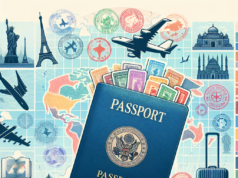
In recent years, global migration has reached unprecedented levels, reshaping the demographic and socio-economic landscapes of nations worldwide. As millions of individuals and families embark on journeys in search of better opportunities, safety, and stability, the implications of this alarming surge are profound. This article delves into the current trends, underlying factors, and the multifaceted impacts of migration, while also exploring the policy responses necessary for sustainable integration and management.
Understanding the Current Landscape of Global Migration: Key Statistics and Trends
According to the United Nations, the number of international migrants reached 281 million in 2020, a significant increase from 173 million in 2000. This figure represents approximately 3.6% of the global population, highlighting a growing trend that is reshaping nations. The World Bank projects that by 2030, the number of migrants could rise to 1 billion, driven by various factors including economic disparities, conflict, and environmental changes. Notably, the COVID-19 pandemic has further complicated migration patterns, with many countries tightening borders while simultaneously experiencing labor shortages in key sectors. As a result, the landscape of global migration is not only expanding but also evolving, with new routes and demographics emerging.
Factors Driving the Alarming Surge in Global Migration: A Comprehensive Analysis
The surge in global migration can be attributed to a confluence of factors. Economic inequality remains a primary driver, as individuals from low-income countries seek better job prospects and living conditions in wealthier nations. Political instability and conflict also play a significant role, with millions fleeing war-torn regions in search of safety and security. Additionally, social factors such as family reunification and educational opportunities contribute to the increasing movement of people across borders. The interplay of these factors creates a complex migration landscape, where individuals are often compelled to leave their home countries under duress, seeking refuge and a chance for a better life.
The Impact of Climate Change on Migration Patterns: A Growing Concern for Nations
Climate change is emerging as a critical factor influencing migration patterns, with millions displaced by natural disasters, rising sea levels, and extreme weather events. The Internal Displacement Monitoring Centre estimates that in 2020 alone, 30.7 million people were newly displaced due to disasters linked to climate change. This trend is expected to intensify, particularly in vulnerable regions such as Sub-Saharan Africa and South Asia, where environmental degradation threatens livelihoods. As nations grapple with the consequences of climate-induced migration, the need for comprehensive strategies to address the root causes and support affected populations becomes increasingly urgent.
Economic Implications of Increased Migration: Opportunities and Challenges for Host Countries
The economic implications of increased migration are multifaceted, presenting both opportunities and challenges for host countries. On one hand, migrants often fill labor shortages in key sectors, contributing to economic growth and innovation. They bring diverse skills and perspectives that can enhance productivity and competitiveness. On the other hand, rapid influxes of migrants can strain public services, housing, and infrastructure, leading to social tensions and economic disparities. Policymakers must navigate these complexities to harness the benefits of migration while addressing the challenges it poses to social cohesion and economic stability.
Social and Cultural Transformations: How Migration is Reshaping National Identities
Migration is not only an economic phenomenon but also a catalyst for social and cultural transformation. As diverse populations settle in new countries, they bring their traditions, languages, and customs, enriching the cultural fabric of host societies. However, this cultural exchange can also lead to tensions, as communities grapple with issues of identity, integration, and belonging. The challenge for nations lies in fostering inclusive environments that celebrate diversity while promoting social cohesion. As migration continues to reshape national identities, the dialogue around multiculturalism and integration becomes increasingly relevant.
Policy Responses to Migration Trends: Strategies for Sustainable Integration and Management
In response to the alarming surge in global migration, nations are called to adopt comprehensive policy frameworks that prioritize sustainable integration and management. Effective strategies include enhancing legal pathways for migration, investing in community support programs, and fostering collaboration between governments, civil society, and international organizations. Additionally, addressing the root causes of migration, such as poverty and conflict, is essential for long-term solutions. By implementing inclusive policies that recognize the contributions of migrants, countries can create resilient societies that benefit from the diverse talents and perspectives of their populations.
The alarming surge in global migration presents both challenges and opportunities for nations worldwide. As the landscape of migration continues to evolve, understanding the underlying factors and impacts is crucial for developing effective policies. By embracing diversity and fostering inclusive environments, countries can not only manage the complexities of migration but also harness its potential to enrich societies and drive economic growth. The path forward requires a concerted effort to address the root causes of migration while ensuring that the rights and dignity of all individuals are upheld.

























